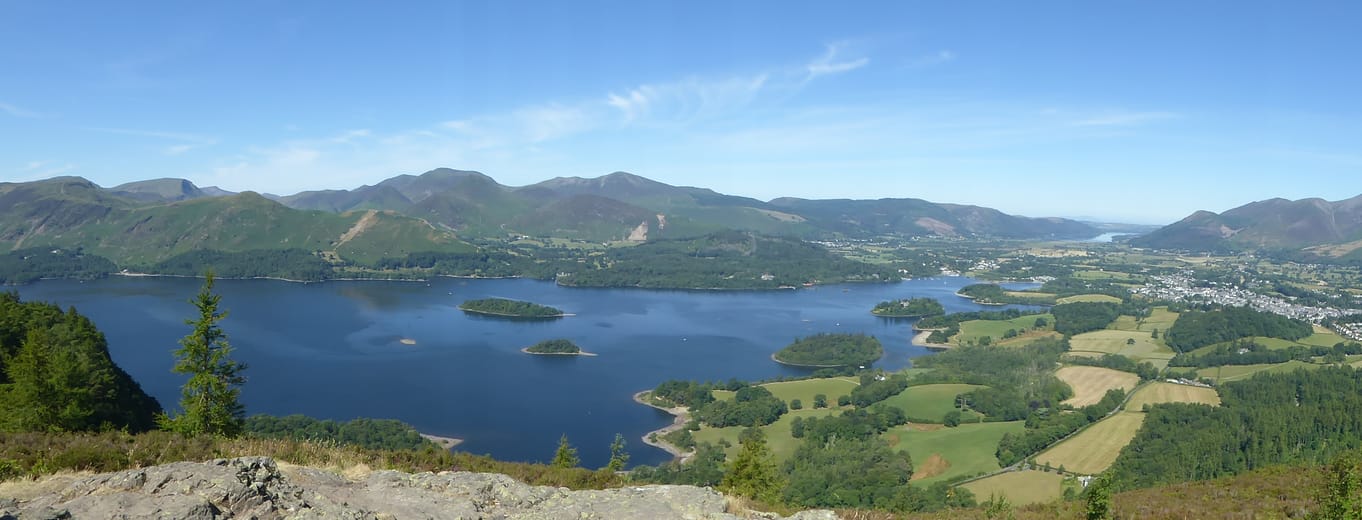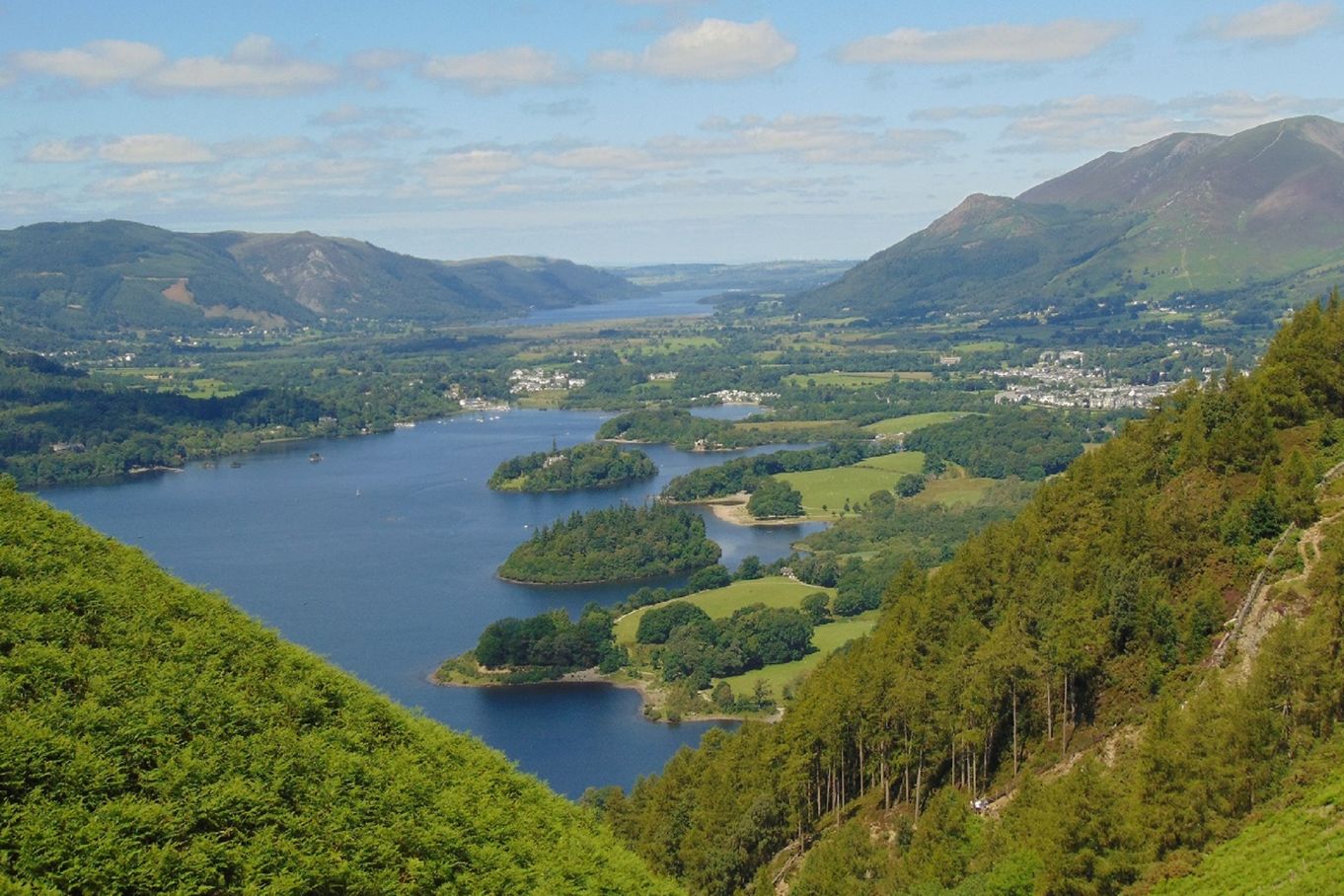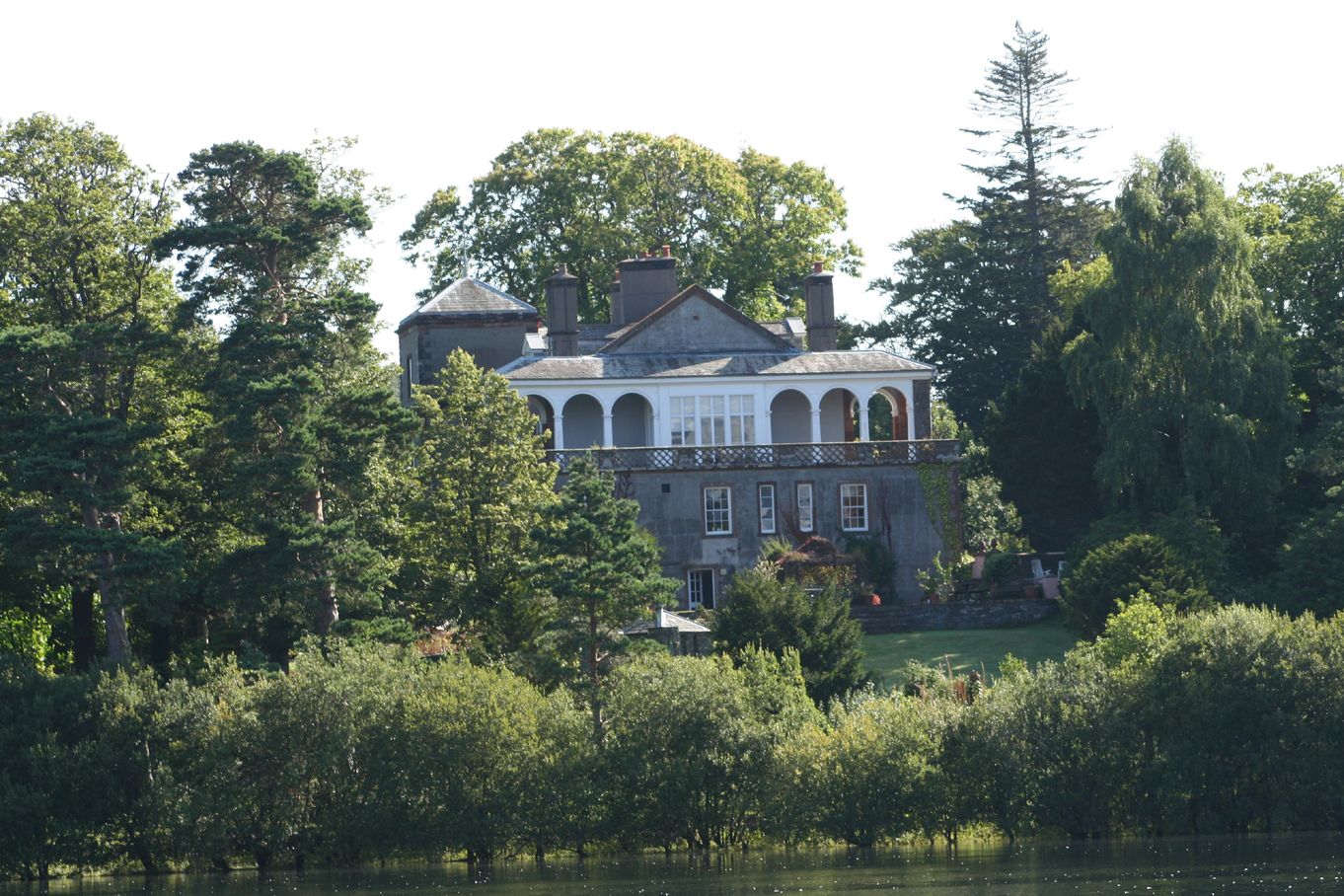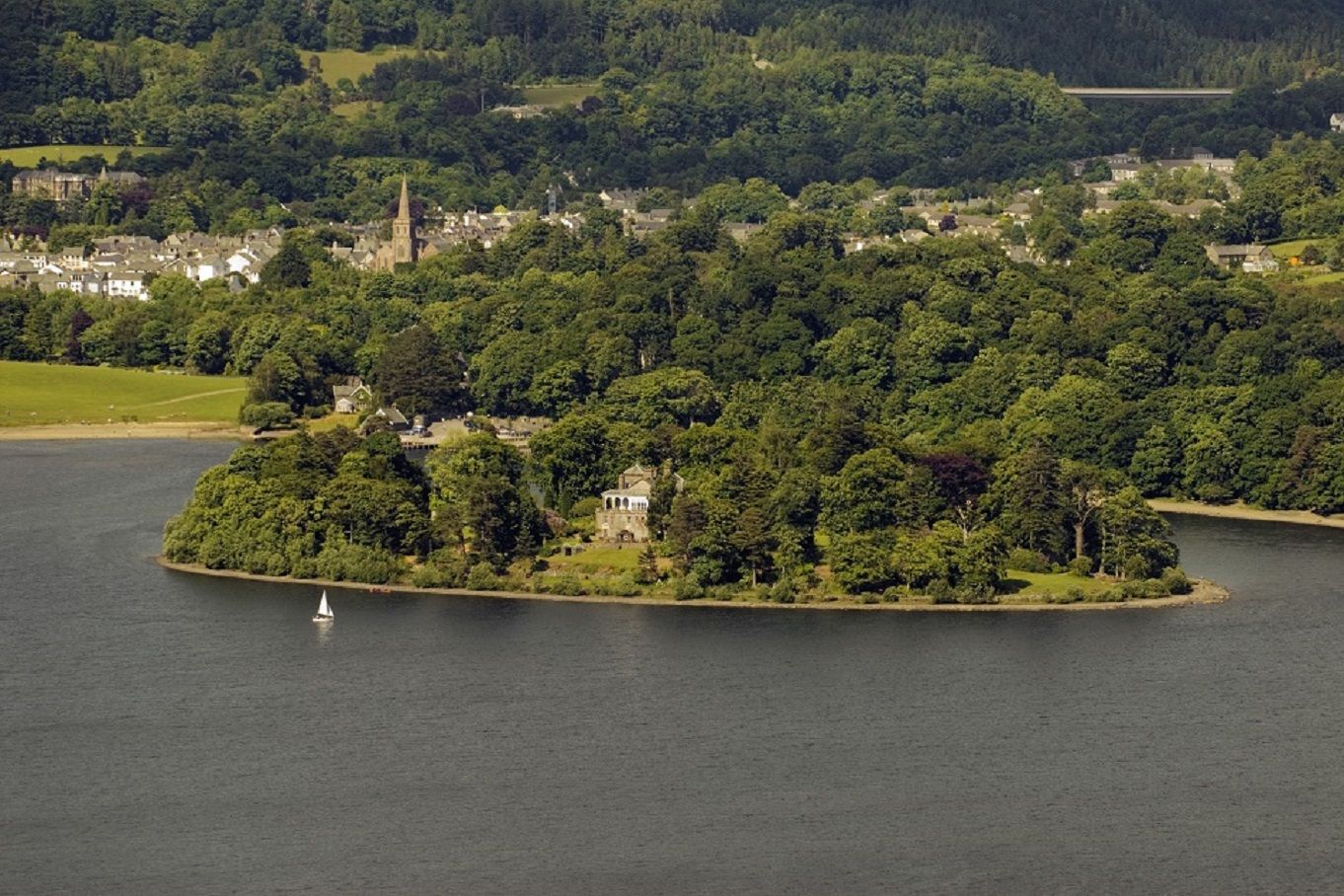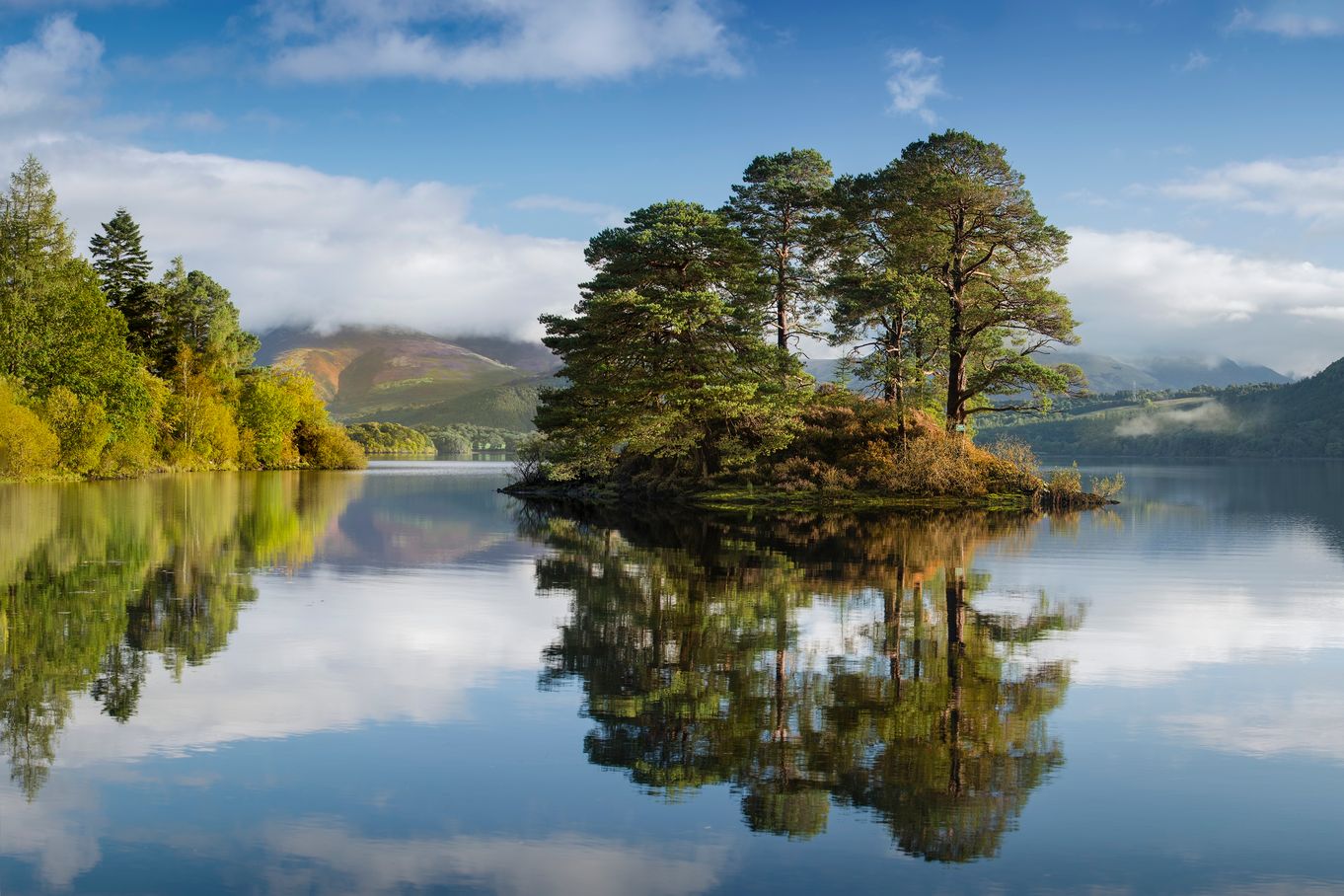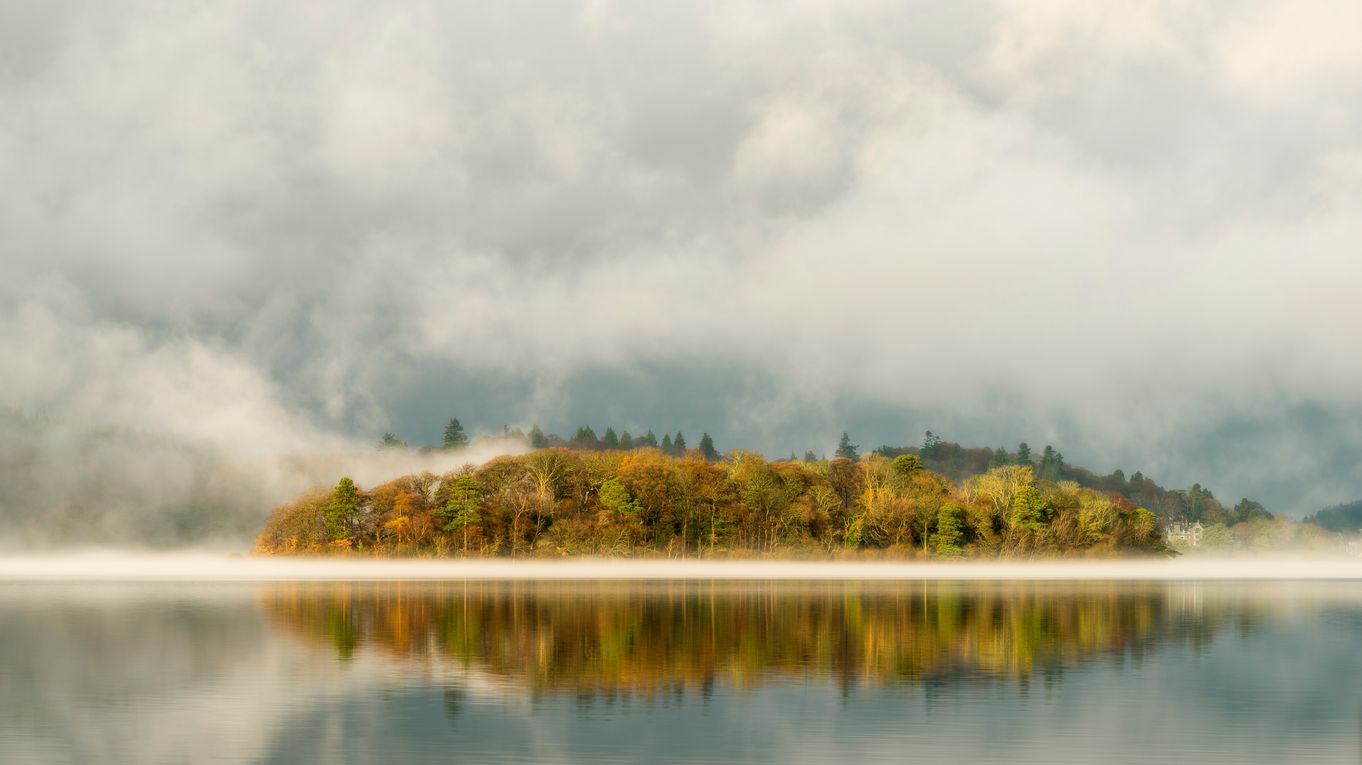Islands of Derwentwater
There are four islands in total on Derwentwater, all owned by the National Trust, as is much of the shoreline. Compared to islands on other lakes the ones on Derwentwater are all regular in shape. There is also one floating island which appears sporadically towards the end of summer.
Derwent Isle - This is close to the boat landings and to the west of Friar's Crag. Shielded from view by woodland visitors to the boat landings can barely see the impressive house on the island. It is the only island with a house still remaining on it. Access to the island is by boat, the boat-house being clearly visible from the boat landings. The island and house are leased by the National Trust to tenants. The house is open to the public for organised visits 5 times a year organised by the National Trust.
Derwent Island was reputedly originally called Vicar's Island as it was the property of Fountains Abbey before the dissolution of the monasteries.
Derwent Isle was probably first settled by the German copper miners of the 16thC. This grand house was built in the late 1770's by a prominent character, Joseph Pocklington who built the house and several follies. He is most renowned for the spectacular firework displays on the lakeshore at that time and the fake naval battles staged around the island. There was also a fair on Crow Park and spectators could enjoy watching a regatta involving teams of people rowing, sailing and swimming around the island .
Lord's Island - This is close to Derwent Isle in the inlet formed by Friar's Crag. It was once home to the earls of Derwentwater until the Jacobite rebellion. A house was built on this island around 1450 of which only the foundations remain today. The mansion was destroyed during the civil wars around 1651. Access to the island was by a drawbridge which connected it with the mainland. Trees grew on the island giving homes to thousands of rooks and as a result, it was known as Crow Island for some time. The trees have now gone and so have the rooks.
St Herbert's Island - is situated in the middle of the lake. It was named after the seventh-century hermit St Herbert who brought Christianity to the area in AD685 and who took sanctuary on the island. The remains of a cell in the island's undergrowth are evidence of the hermitage. The Friars Crag viewpoint is named after the monks who sailed over to St. Herbert's Island on pilgrimage to visit the saint. The island also features as Beatrix Potter's 'Owl Island' in her Squirrel Nutkin story and was used in the 2016 Swallows and Amazons film. Boat users are allowed to land on St Herbert's Island.
Rampsholme Island - This is considerable smaller than the other three islands. It is named after the wild garlic that grows in profusion on the island.
